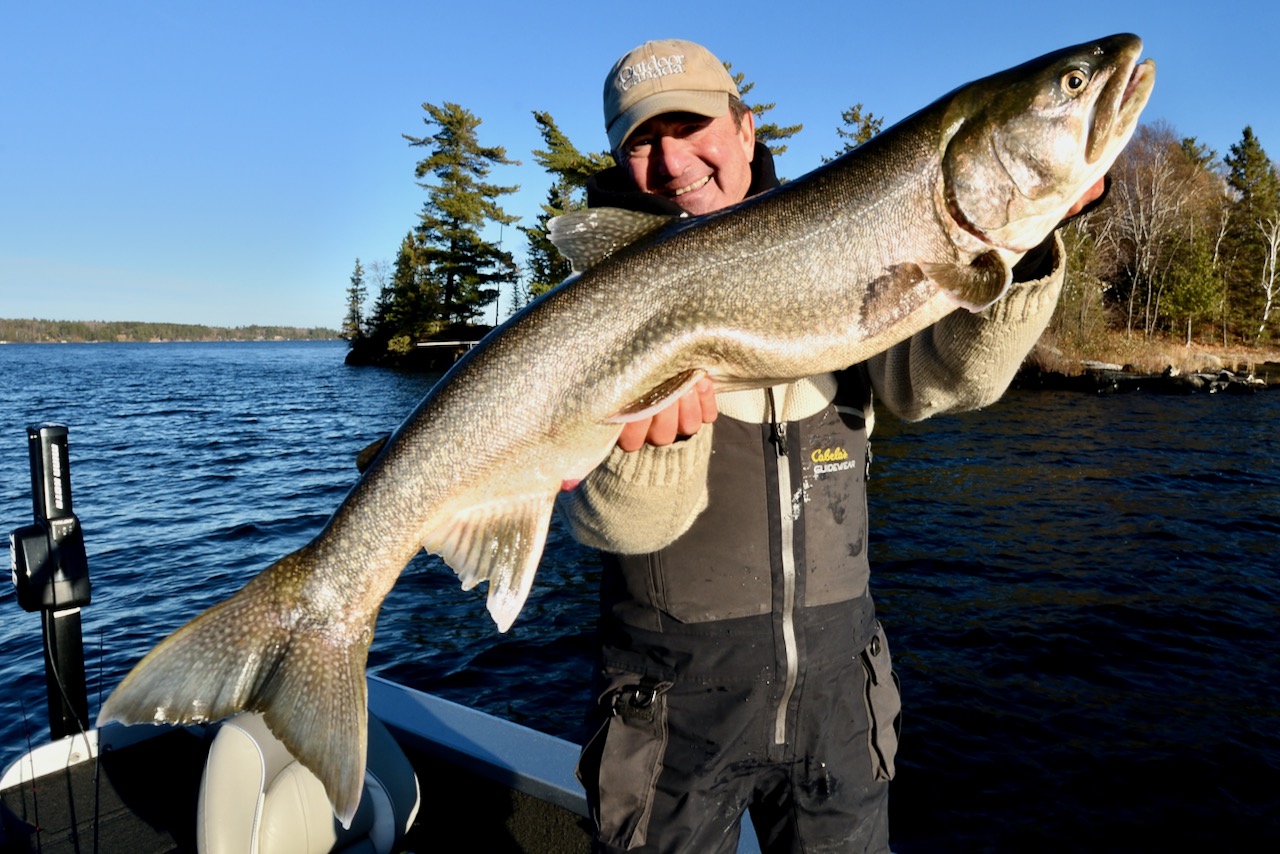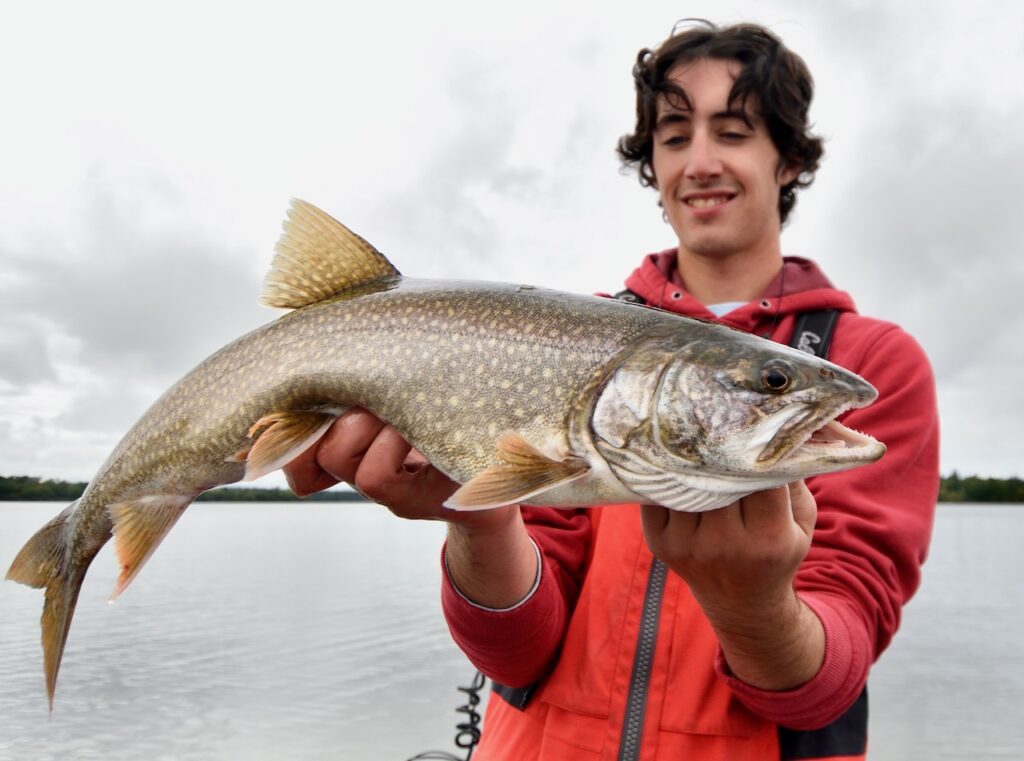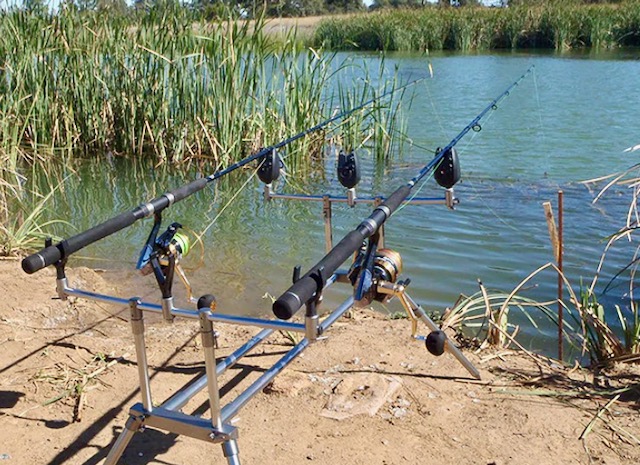EASY-DOES-IT LAKERS
Simple tackle and tactic tips for springtime trout action
Advertisement
#2 THE TROUT TRAP
For my absolute favourite spring trout tactic, I use a boat to get to the spot I want to fish, but then I tie it up, get out and, once again, fish from shore. This is also a great way to entertain family, friends or kids, because you can also have a crackling campfire as you catch fish.
Advertisement
The key is to find a large, flat, shallow and rocky shoreline shoal—the more expansive the better—with lots of 12- to 25-foot-deep water around it. When I’m fishing a backcountry lake that doesn’t have a bottom contour map, I’ll spend time on Google Earth looking for prominent underwater points, especially off the ends of islands. They stick out clearly, showing up as light-coloured shallows. If you zoom in, you can even sometimes see the boulders on the bottom.
TACKLE
The set-up here is crucial. You need a seven- to eight-foot medium or medium-heavy action spinning or baitcasting rod. I prefer the same baitcaster outfit I use when pulling bottom bouncers and spinner rigs for walleye. Slide a quarter- to 5/8-ounce barrel sinker, bait walker or slinky sinker up your main line and attach a swivel to the end to stop it from sliding off. Then attach a four- to six-foot-long, eight- to 12-pound mono or fluoro leader. Finish off the rig by tying on two #6 Gamakatsu treblehooks spaced approximately two inches apart. This is the very same quick-strike rig I use during winter to catch pike, only with a thin clear leader instead of a wire one. Recently, we’ve been substituting the trebles with a single 2/0 to 4/0 Gamakatsu circle hook, which has worked brilliantly.
Advertisement
For the piece de resistance, carefully slice open the belly of a freshly thawed six- to eight-inch sucker, cisco, herring or mackerel, scoop out the insides and stuff a small, pencil-shaped piece of balsa wood into the cavity. (You can buy balsa at any craft store, and trim it to size with a pocket knife.) Wrap a couple of thin elastic bands around the bait to secure the wood; you can also use the clear, self-adhesive elastic thread used to make spawn sacs.

When you hook the bait to the quick-strike rig, don’t fret about whether it floats in a head-down, head-up or horizontal position. I used to think horizontal was ideal, but I’ve since caught so many trout on vertically hanging baits that I’m certain it doesn’t matter. The key is to use freshly thawed bait. If you wouldn’t eat it, neither would a trout.
Advertisement
TECHNIQUE
Setting your trout trap requires a little teamwork. Pass the baited rig to an angler in the boat while you stay on shore holding the rod, with the reel in free spool. Let the line unwind as the boat slowly backs away. While backing out, the angler in the boat must watch the sonar unit (or look over the side of the boat) for an ideal place to drop the rig. I like edges and transitions where the water changes colour, as well as beside isolated rocks. Once the rig is dropped into the water and falls to the bottom, the sinker will rest in the sand, gravel or pebbles, while the bait floats up and suspends in the water column four to six feet above bottom, depending on the length of your leader.
As the rig drops, it’s important to keep the rod tip high, and steadily feed out line so the offering falls straight down and doesn’t pendulum back toward shore on a tight line. The trap is set when the sinker hits bottom and slack line drapes down from the rod tip. Now place the rod in a holder driven into the sand, or carefully wedge the rod butt into a small pile of rocks. In either case, the rod should stick straight up. Next, engage the spool and slowly reel in just enough line to take up the slack without moving the bait. The line should stretch out from the tip of your upright rod like a laundry line, meeting the water at the point where the bait went down.
For a strike indicator, make a thin cut in a small piece of balsa wood and wedge it onto your line an inch or two away from the rod tip, letting it flutter in the breeze. (I paint the indicator with bright red or chartreuse nail polish.) You can also use a tiny piece of flagging tape or, if you have one, an electronic bite alarm (see “Carp concept”).
Keep the tension on your drag loose, and you’ll see the indicator zip away from your rod tip once a trout takes the bait. And because you’re using a slip-sinker that’s lying on bottom, the trout will feel no resistance whatsoever. Grab the rod out of the holder, tighten the drag and smoothly sweep the rod to set the hook. Do this and every trout will be hooked in the corner of its mouth, making for a safe live-release.
Bonus tip: Carp concept
Carp anglers have devised ingenious portable stands equipped with rod holders and super-sensitive, battery-operated alarm systems to signal when a fish takes their bait. These are the most sensitive strike indicators ever devised, so if you have one, use it on your trout trap.



